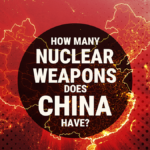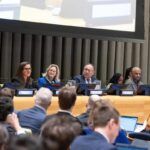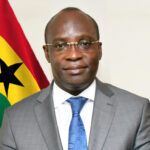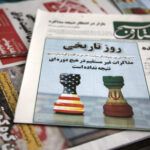Seoul purpose
By Fissile Materials Working Group | March 15, 2012
In April 2010, representatives from 47 countries and three international organizations gathered in Washington, DC, for the first Nuclear Security Summit, an international effort created to strengthen fissile material security measures and prevent nuclear terrorism. Leaders endorsed the summit’s objective of securing all vulnerable nuclear materials around the world in four years and signed consensus communiqué and work plan documents focused on compliance with today’s nuclear material security regime. In addition, 30 countries offered more than 60 specific national commitments to enhance nuclear security and to prevent the illicit transfer and use of fissile materials. Completion of these national commitments represents some of the most tangible results of the Washington summit. Reviewing, advancing, and building on the progress that counties have made implementing their 2010 commitments are among the objectives for the second summit being held in Seoul, South Korea, this month.
Washington summit accomplishments. With the Seoul summit only weeks away, countries have fulfilled approximately 80 percent of their national commitments from the 2010 summit. These successes range from domestic, unilateral measures that advance nuclear security to multinational, collaborative contributions. Canada, China, France, India, Italy, Japan, Kazakhstan, the Republic of Korea, and Saudi Arabia developed new nuclear security centers of excellence, hosted conferences, and held training activities in accordance with their national commitments. Chile, meanwhile, eliminated its entire stockpile of highly enriched uranium (HEU), and Kazakhstan secured more than 10 tons of HEU and three tons of plutonium. Additionally, Belgium, Canada, Japan, New Zealand, Norway, Russia, the United Kingdom, and the United States provided funding for the International Atomic Energy Agency’s (IAEA) Nuclear Security Fund, for HEU-reactor conversions, and for anti-smuggling initiatives.
Important progress has also been made by countries executing projects that are technically complex and require long lead times to complete, such as HEU removal and reactor conversions. More than half of Ukraine’s HEU stocks have been eliminated, and the country is on track to complete a full clean out by the Seoul summit. Mexico has signed an agreement with the United States and the IAEA to fulfill its reactor-conversion and HEU-elimination commitments, and Kazakhstan has also worked with the United States to remove and downblend 33 kilograms of HEU fuel as part of its reactor-conversion and HEU-elimination commitments.
These accomplishments have demonstrated that the summit process has been effective at strengthening the existing nuclear material security regime and quickly achieving progress on an unprecedented global scale. Though the nuclear security challenge will not be solved once the 2010 national commitments have been met, their implementation to date has helped create a foundation of success that offers states an opportunity to go beyond the boundaries of the current regime and to begin developing a more globally inclusive and responsive nuclear security system.
Capitalizing on the momentum in Seoul. When more than 50 world leaders arrive in Seoul for the 2012 Nuclear Security Summit, their focus will again be on strengthening global nuclear material security through national and cooperative measures. However, the 2012 summit has broadened its scope to address radiological-source security in greater depth and to examine the interface between nuclear safety and security. Leaders are expected to endorse a Seoul communiqué that includes language on minimizing the civil use of HEU — the material experts believe is most vulnerable to use by would-be nuclear terrorists — and on offering new national (or even multinational) voluntary commitments.
As a halfway point toward the summit’s four-year goal of securing all of the world’s vulnerable nuclear material, the 2012 summit offers leaders the opportunity to evaluate what work still needs to be done and to help the nuclear security regime evolve to address new threats. However, summit participants have not adopted a common format for tracking and reporting on their commitment implementation. This complicates efforts to assess the current state of global nuclear security and to identify what remains to be done. Before the third summit in the Netherlands in 2014, leaders will need to have a credible process and sound methodology at their disposal to underpin any declarations they make on the cumulative impact of the summit and on their progress toward the four-year goal. The host of the third summit should play a leading role in negotiating a common tracking format in advance of the 2014 summit and be supported in these efforts by previous summit hosts and the broad range of countries that have endorsed the four-year goal at the United Nations, the Group of Eight, and the 2010 Nuclear Security Summit.
Finally, because the 2014 summit could be the last of the series, it should have a vision for the future and do more than simply look backward. Strengthening nuclear material security is an ongoing, long-term mission that requires sustained attention to ensure that the toolset available to policy makers and industry is continually adapting to meet new and emerging threats. The Seoul Nuclear Security Summit should capitalize on the current momentum by increasing the transparency and accountability of the nuclear material security regime — especially since there are transnational consequences when a country’s nuclear security falls short. Summit participants should also encourage teamwork among nuclear communities and promote creative problem solving to mitigate existing and emerging nuclear threats. Lastly, countries should continue using the Sherpa communication network as a valuable tool for connecting states committed to raising the bar for nuclear security. Securing vulnerable nuclear materials is a global effort.
Editor’s note: Michelle Cann, Kelsey Davenport, and Margaret Balza wrote this column. Cann is a senior budget and policy analyst at the Partnership for Global Security, where she focuses on tracking and analyzing the budgets of US international weapons of mass destruction security programs, the evolution of fissile material security policies, and the impacts of globalization on nuclear nonproliferation. Davenport joined the Arms Control Association in August 2011 as the Herbert Scoville Jr. Peace Fellow. She focuses on issues related to the military budget and nuclear security. Before this, Davenport worked for a think tank in Jerusalem, where she researched regional security issues and track II diplomatic negotiations. Balza is a research assistant at the Partnership for Global Security, where she manages the Obama Nonproliferation Tracker and conducts other nuclear security and nuclear energy research.
Together, we make the world safer.
The Bulletin elevates expert voices above the noise. But as an independent nonprofit organization, our operations depend on the support of readers like you. Help us continue to deliver quality journalism that holds leaders accountable. Your support of our work at any level is important. In return, we promise our coverage will be understandable, influential, vigilant, solution-oriented, and fair-minded. Together we can make a difference.
Topics: Columnists, Nuclear Weapons















